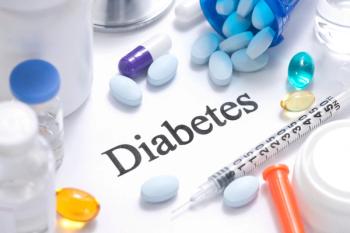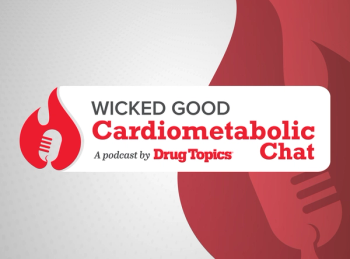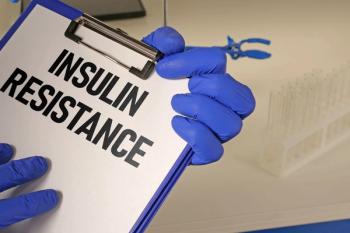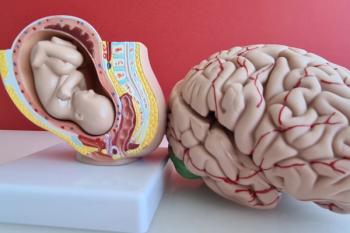
Pharmacy in flux
Despite the ups and downs of 2014, pharmacists in both the community and hospital settings anticipate an improved business climate.
Pharmacists in both the community and hospital settings are looking forward to an improved business climate next year. Although retail pharmacists continue to struggle with lower reimbursements, mail-order competition, and now preferred pharmacy networks, the majority - 62% - still expects a good-to-excellent year ahead.
Expectations are slighter better on the hospital side, with 67% of pharmacists seeing a bright future in 2015, despite the continuing challenges of expanding drug budgets and drug shortages, and concerns about generic drug price hikes and hospital readmission penalties.
These were some of the top-line findings from Drug Topics’ 2015 Business Outlook Survey, an annual mail survey of community and hospital pharmacists nationwide. The survey examines both the current business climate in 2014 and prospects for the coming year.
Community pharmacy results
A majority of community pharmacists (53.6%) expect net profits for 2014 to increase over those for 2013 (25.2%) or to remain the same as they were last year (28.4%). Just over one-third (35.7%) expect net profits to decrease this year from last year’s level, and 10.7% aren’t sure.
Community pharmacists ranked the top five positive factors affecting their business this year as follows (Figure 3):
1. Immunizations (46.6%)
2. Medication therapy management (35.7%)
3. Increase of electronic prescriptions (33%)
4. Patient-care services (e.g., counseling, adherence, med synchronization/reconciliation) (27.9%)
5. Medicare Part D (24%)
Immunizations, growth in e-prescribing, and Medicare Part D made the top five lists for both 2014 and 2015. MTM and patient-care services replaced health insurance exchanges and expansion of state Medicaid programs on the list for 2015.
The major challenges for 2015, outlined in Figure 4, are little changed from 2014:
1. Lower reimbursement from third party payers (71.8%)
2. Competition from mail-order pharmacies (56.6%)
3. Preferred pharmacy networks for Medicare Part D (51.9%)
4. Preferred pharmacy networks for commercial programs (47.1%)
5. Decrease in state Medicaid rates and MAC and FUL (36.9%)
Impact of Medicare Part D
Medicare Part D has been a question mark for community pharmacy since the program was rolled out in 2006. It was initially seen as a positive move by both patients and pharmacists. Patients with Part D coverage believed they could stop worrying about the cost of medications, especially generics. Community pharmacists expected an increase in business. Nine years later, reaction is mixed.
Patients have been vocal in their distaste for the Part D “doughnut hole,” which can leave them without price protection after they spend a relatively modest amount on drugs. One of the major elements in the Affordable Care Act is a gradual closing of that coverage gap between now and 2020.
Pharmacists are divided. A third (33%) said that Part D has had a positive impact; slightly less than one-third (31.6%) have seen a negative impact; and slightly more than one-third (35.7%) are undecided.
Most Medicare beneficiaries appear to have opted for Part D coverage. Seen from the perspective of community pharmacy, the problem is that patients have enrolled in plans with preferred pharmacy networks and/or mail-order coverage. Both options can have negative effects on retail sales and net profits. And delays in price updates mean that reimbursement increases lag acquisition cost increases.
“Companies fail to keep up with the cost of medications. Reimbursement is slowly eroding. Contracts resulted in lower reimbursement in order to be a preferred provider. Decreased profits and delayed payments as well as new fees associated with contracts are problematic. There are too many plans, each with their own formulary,” are typical survey responses.
“Medicare was a positive for my pharmacy when it first started, but with the terrible reimbursement and being locked out of plans, I now say it is a negative,” wrote a community pharmacist.
Good for patients, problematic for pharmacies
Several respondents noted that Medicare Part D pricing has helped recipients fill prescriptions on a more regular basis. Beneficiaries with Part D coverage have greater access to pharmacies, more opportunities to consult with pharmacists, and increased availability of medication therapy management.
Those same respondents point out that the patient benefits of Part D come with significant strings attached. Part D pricing is more affordable, but only until the patient hits the doughnut hole. Too many recipients on fixed incomes go back to skipping medications.
Patients who can’t afford doughnut-hole prices never reach the spending level needed to regain Part D coverage. Their health suffers from poor adherence and pharmacy suffers from missed sales.
Other respondents noted that while prescription and sales volumes have increased under Part D, net profits are falling.
“Reimbursements have continued to fall, many below acquisition cost, forcing us to sell below cost of the medication itself (never mind other overhead) or to turn away customers regularly,” a respondent noted.
“Lower reimbursement and higher cost from wholesalers and manufacturers have decreased net profit. We are now refusing to fill money-loser Rxs and send them to other pharmacies,” said another pharmacist.
MTM services on the rise
The 2015 survey found that more than half of community respondents, 53.2%, provide medication therapy management (MTM) services under Part D. That is a significant increase from last year, when 43% of pharmacies reported providing MTM.
The not-so-good news is that barely more than one-third of MTM providers are being paid to provide that MTM. Close to half (44.7%) reported receiving less than $250 in MTM payments this year. One-third (33.3%) received $250 to $999, another 17.7% got $1,000 to $4,999, and only 2.8% received $5,000 or more for the year. MTM has not become a significant revenue stream for more than a handful of pharmacists.
Associations under fire
Pharmacy associations say that their primary mission is to represent the best interests of pharmacists. But when Drug Topics asked pharmacists if they were satisfied with the way their association worked for them, only one-third of respondents (33.3%) said yes.
The “yes” response was down slightly from last year, when 34% said they were happy with the way their association represented their interest. The “no” side surged from 35% in 2013 to 43.7% in 2014. The jump in dissatisfaction was fueled by a drop in the “don’t know” responses from 31% to 23.1%.
“All they want are my dues!” said one respondent. “Community pharmacy problems (for employed pharmacists) are pretty much ignored,” said another. “Don’t focus on the relevant and important topics (work conditions, job market, pharmacist surplus, etc.),” added a third. “APhA is about helping the idea of pharmacy rather than pharmacists or pharmacies,” noted another.
But even as pharmacists expressed disappointment with pharmacy associations in general, several state and local societies received vocal support for their efforts.
The California Pharmacists Association was praised for its successful campaign to achieve provider status for pharmacists. The Georgia Pharmacy Association was singled out for its active efforts to improve pharmacy conditions. The Oklahoma Pharmacists Association was praised for its efforts to pass the state’s PBM transparency legislation. State associations in Louisiana, Michigan, New York, Pennsylvania, South Carolina, Wisconsin, and elsewhere came in for both compliments and complaints.
The overwhelming response, however, concerned areas in which respondents said associations should be doing more.
“[The associations] seem to continue to focus on issues like CEs and provider status, and not on bread-and-butter issues of reimbursement and access,” was a typical comment. Several respondents mentioned the growing oversupply of pharmacists and the increasing number of pharmacy schools. Nearly two-thirds of respondents, 62.4%, said there is an oversupply of pharmacists in their state. Most, 44%, said the oversupply was “somewhat severe,” 21% called it “very severe,” and 18.3% rated it as “extremely severe.”
The recent change in the status of hydrocodone from Schedule III to Schedule II also came in for comment.
“I never saw anything on how our profession is standing on the schedule change of hydrocodone. This causes more work for pharmacists. Also, in Texas they continue to open pharmacy schools without realizing what they are doing to our pay scales.”
Hospital pharmacy results
Hospital pharmacists’ business expectations are generally positive and nearly unchanged from 2014. Most hospital pharmacists, 59%, expect to see their 2015 drug budgets increase compared to what they had to work with in 2014. That number is up from 41% who expected an increase last year.
There was also an improvement in negative budget expectations, with 11.5% expecting a decrease in the 2015 drug budget, compared with almost 15% who expected to see a drop last year.
The need to increase drug budgets may be explained by the main concerns affecting hospital pharmacists - continuing drug shortages and recent generic drug price hikes (Figure 5). Almost 78% of the survey respondents noted that drug shortages are continuing to affect their health systems this year. Forty-five percent of them said that increases in generic drug prices were a concern, as were hospital readmission penalties (nearly 33%). Other concerns include Medicaid expansion and health insurance exchanges (28.7%), and the expanded role of pharmacists in direct patient care (20.5%).
Compensation and employment
Most pharmacists expect next year’s hospital pharmacy staff salaries to remain about the same as they are this year. More than half, 55.7%, expect pharmacist salaries to remain the same, 29.5% expect an increase, and 9.8% expect a decrease. Slightly more, 56.6%, expect technician salaries to remain the same, 36.9% expect an increase, and only 1.6% expect a decrease.
Overall pharmacy employment in hospitals is also expected to remain stable. Some 58.2% expect pharmacist staff levels to remain the same, 23% expect to see more pharmacists, and 16.4% expect fewer pharmacists. Expectations are similar for technicians; 59.6% of respondents expect to see the same number of technicians, 27.1% expect more techs, and 9.6% expect fewer.
Improved patient care
Improvement of patient care is always a priority. The top five actions hospitals took in 2014 to improve patient care (Figure 6) include:
1. Increased efforts to reduce drug errors (70.5%)
2. Improved documentation of pharmacist interventions (62.3%)
3. Reductions in hospital-acquired infections (45.1%)
4. Medication reconciliation for incoming and outgoing patients (42.6%)
5. Purchasing from secondary wholesalers avoided (34.4%)
The top five list is virtually identical to last year’s responses. The biggest change concerned action to avoid secondary wholesalers, which replaced encouragement of technicians to seek certification. The 2014 top five list continues unchanged into 2015, although the percentages differ slightly.
Association ratings
Hospital pharmacists are ambivalent about their pharmacy associations. Fewer than half, 43.4%, said they are satisfied with the way pharmacy associations represent them, up slightly from 40% in 2013. But nearly one-third of pharmacists, 32%, are not satisfied, and one-quarter, 24.6%, haven’t decided.
“ASHP does a great job with education and representation” is followed by “Associations do not reflect reality” and “I have not seen representation, positive or negative.”
Multiple respondents voiced concern over the growing number of pharmacy schools and their impact on both employment and patient care.
“We need to correct the overproduction of pharmacists. More pharmacists do not help with the objective of expanded service as most are just trying to keep or maintain their jobs,” one respondent wrote.
An older respondent was more direct. “Allowing too many pharmacy schools to open is actually a good thing. I can hire pharmacists at a reduced rate and I am toward the end of my career. But kids graduating are not able to find full-time positions and are settling for a reduction in pay and benefits. This could be detrimental to the profession in the long run.”
Newsletter
Pharmacy practice is always changing. Stay ahead of the curve with the Drug Topics newsletter and get the latest drug information, industry trends, and patient care tips.





















































































































































